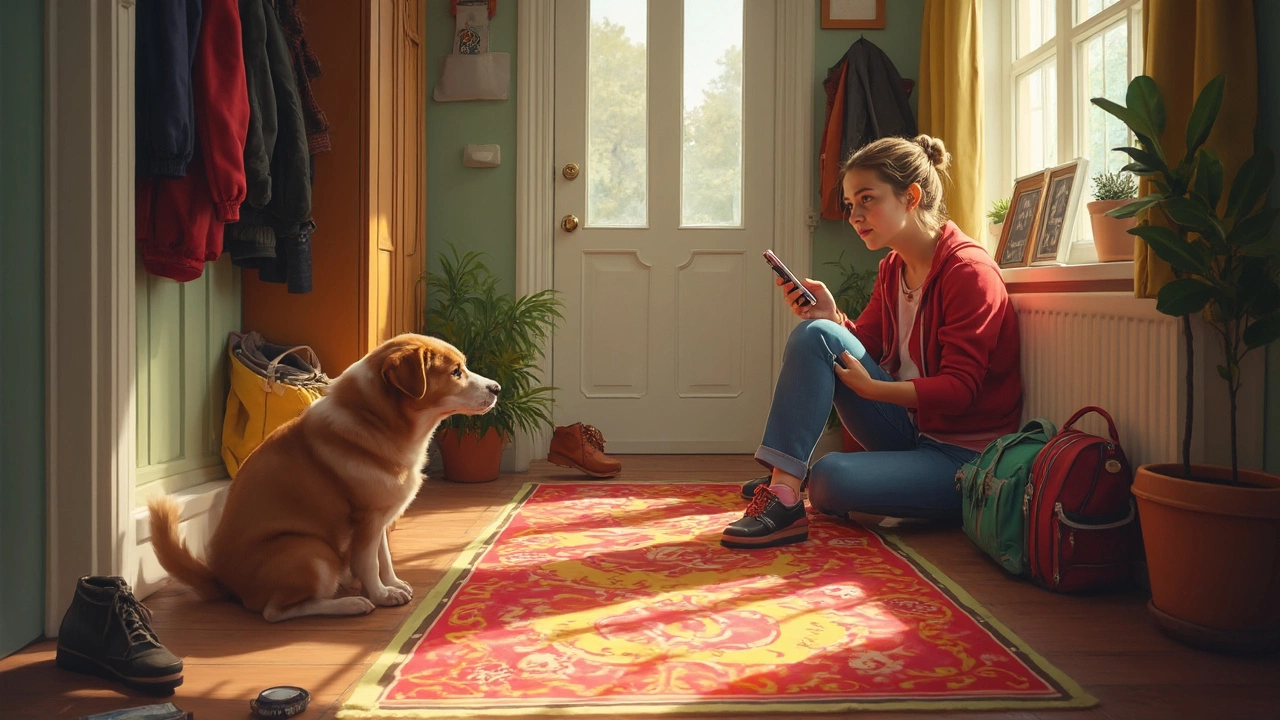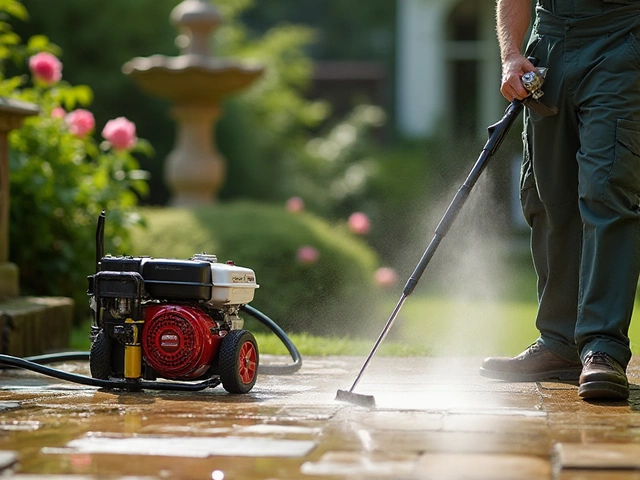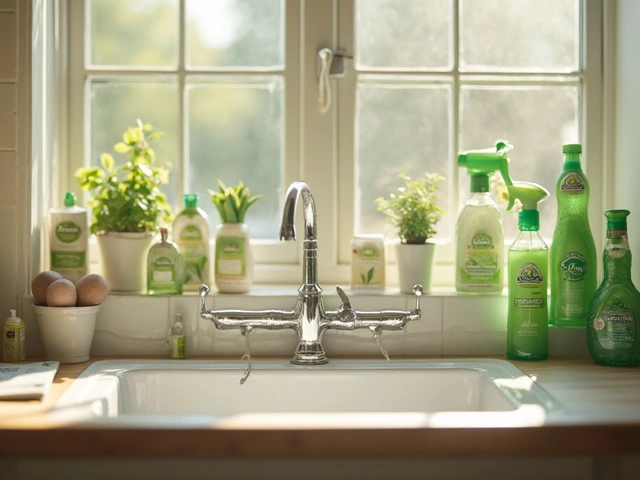It’s wild how fast clutter piles up. One day you’re just looking for a phone charger, the next you’re wading through mystery piles, toys, and those random cords you keep insisting you’ll use "someday." If you’ve got a whole house full of clutter, figuring out where to start might feel impossible. But you don’t need eight hours or an expert with a clipboard to make a dent—even if you need results today.
First: you’re not alone. Tons of people get stuck just staring at the mess. The trick? Do anything—pick one small area, like the kitchen island or the coffee table. Don’t overthink it. Set a timer for 15 minutes so it feels manageable. Toss old mail, ditch anything broken, dump dirty dishes in the sink. That burst of action gets momentum going and gives your brain a tiny win.
Don’t bother hunting for perfection or Insta-worthy spaces. Focus on clearing the floors and paths—these make your house feel cleaner right away and can actually help you breathe easier, both literally and mentally. If you have high-traffic family spots like the entryway (where shoes and backpacks breed), tackling just that spot first can have a huge visual impact.
The fastest trick? A "clutter basket." Grab a laundry basket and do a sweep through your main living areas. Anything that’s out of place gets tossed in the basket. You don’t have to put it all away right now. Just clearing those surfaces can make you feel like you’ve made serious progress, even if you’re tripping over toy dinosaurs and mail five minutes later.
- Face the Mess (and Your Mindset)
- Room-by-Room Attack Plan
- Quick Wins and What to Skip
- Keep the Momentum
Face the Mess (and Your Mindset)
Start with this: most of us underestimate how much clutter is slowing us down. According to a 2023 study by UCLA’s Center on Everyday Lives of Families, people with cluttered homes reported higher stress levels—especially parents. Just knowing a messy house messes with your mood makes tackling the mess more urgent. It’s not about your personality or willpower; it’s science.
If you’re standing in the middle of chaos and already feel defeated, you’re in good company. Everyone has their clutter threshold. The trick is to get out of your head and just start. Perfection doesn’t matter. Remember what Peter Walsh, the organizing expert, says:
"Clutter isn’t just the stuff on your floor—it’s anything that stands between you and the life you want to be living."
Think about what stresses you the most: is it the mountain of laundry, the exploding entryway, or just not being able to find your keys every morning? Name which area drives you nuts. Don’t try to attack the whole house in one go. This is your reality, not a TV transformation show.
- Pick a small, visible area—think your kitchen counter or the couch.
- Set a timer for 15-20 minutes. This tiny burst stops you from getting stuck or burning out.
- Don’t get sidetracked. You’re not cleaning the baseboards or organizing drawers yet. Just surface stuff.
Studies show it takes, on average, just 21 days to start forming new cleaning habits. So, if you feel overwhelmed now, it really is possible to make change stick—one small effort at a time. Develop that "good enough" mindset. You’re aiming for visible improvement, not a magazine spread. When you shift how you think about house cleaning and set the bar at progress, not perfection, the task isn’t nearly as heavy.
Room-by-Room Attack Plan
Trying to clean the entire house in one go is a straight shot to burnout. The best way to break down a clutter crisis is by sticking to a room-by-room approach. You can actually see progress even if you have just half an hour. Each space has its own mess hotspots—knowing where to look saves you serious time and hassle.
If you want a win that feels big right away, start with shared spaces like the living room or kitchen. These areas usually have the widest impact on how tidy your home feels. Here’s a step-by-step game plan broken down by common rooms:
- Kitchen: Clear countertops by moving dirty dishes to the sink or dishwasher, then throw away expired food and empty random wrappers. Wipe down the main preparation area, not the whole kitchen. Skip deep cleaning for now—focus on what looks messy.
- Living Room: Gather toys, magazines, and stray gadgets into your clutter basket. Fold blankets, stack remote controls, and fluff pillows to pull the space together. If there are dishes or food wrappers, take them straight to the kitchen.
- Bathroom: Remove dirty towels, toss empty bottles, and wipe down the sink area. Clear any floor clutter—like last week’s socks (somehow they always end up here). It shouldn’t take more than ten minutes.
- Entryway: Line up shoes, hang coats, and put away dropped bags. A neat entry instantly makes your place seem more organized—even if the bedrooms aren’t perfect yet.
- Bedrooms: Make the bed first—it’s an instant improvement. Then pick up laundry, clear nightstands, and put away obvious trash. You don’t have to empty every drawer or closet right now.
If you’re short on time, try setting a timer for 20 minutes per room. According to research from the National Cleaning Survey, most people can get a room "company ready" in under 30 minutes if they don’t get bogged down by details. Focus on house cleaning routines that are fast and easy to stick with day after day.
If you live with other people—kids or adults—delegate one room each when possible. My kids, Damon and Callum, love racing to see who can pick up more toys or socks. Turn it into a game, and suddenly decluttering stops feeling like punishment. Don’t worry if perfection isn’t happening. Small wins add up and the whole place looks better before you know it.

Quick Wins and What to Skip
When your whole place is chaos, chasing quick wins is the smartest move. These are the tasks that instantly make your home look less cluttered with barely any effort. Skip the deep stuff (like reorganizing drawers or color-coordinating your closet) on busy days. We're going for the biggest visual improvement using the least time.
- Clear counters and tables: Kitchen counters, coffee tables, and dining tables soak up clutter like sponges. Piling all the junk into a box or basket and moving it out of sight brings almost instant relief.
- Empty the trash: Overflowing bins multiply the mess. Taking out the trash (and quick-bagging any obvious junk as you go) tidies things up fast.
- Pick up floor stuff: Shoes, laundry, backpacks, and toys scattered everywhere instantly turn a house into a disaster zone. Just gathering everything into baskets or tossing it in bedrooms for now clears walking space and always makes a big difference.
- Fluff pillows and straighten blankets: It sounds silly but straightening up the couch area can make the whole room look more intentional, even when there’s still work to do elsewhere.
- Run a quick vacuum or sweep: Visible crumbs and dirt are a major “messy house” trigger for your brain. It actually takes less than five minutes to zoom through main paths (I timed myself after Mara said our dog, Ranger, sheds as much as a small bear—she’s right).
Should you start alphabetizing the spice rack? Absolutely not. Sorting piles of mystery papers? That’s tomorrow-you’s problem. Leave the stuff that will eat up all your energy for another day.
Here’s a quick “what pays off fast” table I made after timing myself during Saturday morning chaos:
| Task | Minutes Spent | Biggest Difference Made? |
|---|---|---|
| Sweeping up toys and random shoes | 8 | Massive |
| Wiping the kitchen counter | 3 | Lots |
| Organizing a junk drawer | 20+ | Hardly any |
| Sorting mail and papers | 15 | Not much |
The bottom line? Go for the wins that hit hardest and save the tedious stuff for when you’ve got more focus. You want that hit of progress—right now.
Keep the Momentum
Once you’ve kicked things off with the first burst of clutter clearing, it’s easy to fizzle out or stop halfway. The trick is turning that first bit of energy into a system—something simple so you don’t end up in the same mess a week later.
Start by keeping your tools ready. I always stash a couple of empty baskets by the stairs and in the living room. That way, if someone dumps their house cleaning mess or kid stuff everywhere (looking at you, Callum), it’s a quick toss in the basket and done. Having what you need at arm’s reach cuts down excuses fast.
Set a regular reset time every day. For our crew, it’s after the kids are in bed. We take ten minutes to blitz the main spaces—no deep cleaning, just picking up what’s out. If ten minutes feels too much, try five. Doing this daily stops stuff from snowballing, and research by the National Cleaning Survey even found that homes where people spend 10-15 minutes a day on tidying have 25% lower visible clutter levels.
If you lose steam, switch up your approach. Blast your favorite playlist or turn it into a mini game with family—set a challenge for who can pick up the most toys or mail in three minutes. The more fun you make it, the less it feels like another boring chore.
Keep your expectations real. You’re aiming for progress, not perfection. Celebrate the small wins: clearing a kitchen counter, clearing the hallway, even if your bedroom still looks like a tornado hit. Track your progress on a whiteboard or checklist—ticking boxes is proven to keep you motivated, thanks to the brain’s natural love for completed tasks.
- Stick to daily routines (morning or night, whatever works)
- Involve everyone—even the littlest kid can carry socks to the laundry
- Use reminders—an alarm or sticky note can keep you on track
- Don’t be afraid to ask for help, and accept "good enough" rooms
Here’s a quick look at how regular routines help keep the same day cleaning gains going:
| Habit | Time Needed | Results (per week) |
|---|---|---|
| Daily 10-minute pick-up | 70 minutes | Visibly cleaner home, less stress |
| Weekly 20-minute deep clean | 20 minutes | Big stuff handled, no backlog |
| Basket system | 1 minute as needed | Floors and surfaces stay clear |
Keep tweaking until you find what sticks. With a practical routine, the mess won’t win again soon—and you’ll have way fewer arguments over whose socks are under the couch this time.




